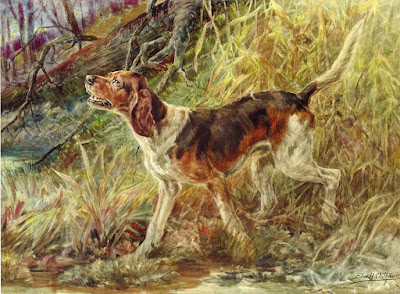There might be a few causes for this:
- the longest hairs of the tip of the brush may have been broken or split.
- since I paint mostly on rough paper, it's possible that the hairs are wearing down.
- dry brushing may also be damaging the brush.
- could be that I'm too rough on my brushes.
I've had these Escoda brushes for a couple of years. What's a typical lifespan of such a brush?
I love how much water these brushes hold, therefore, I hope that I can continue using them for a while longer. I appreciate any tips you can give me.
A number of people have moved to synthetic brushes because they have gotten so good and are far less expensive and you don't have to worry about treating them gently enough. They also generally stand up very well to rougher painting techniques.
Today's artist find is David Chauvin. I adore his style.
Have a great week,
Danielle



